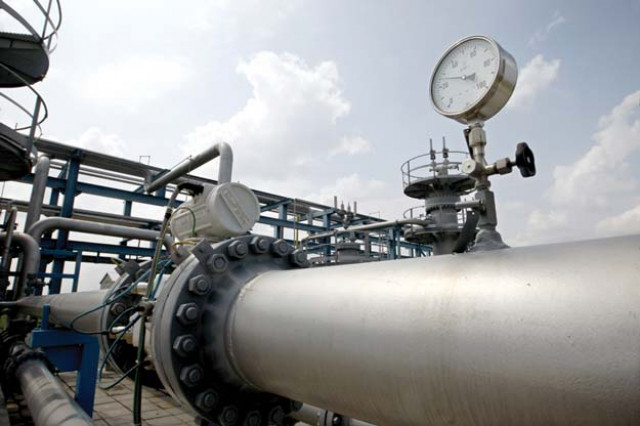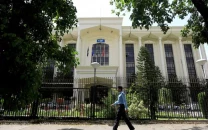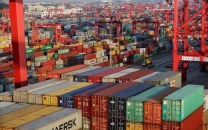Uncertain: Misty details hover over energy clouds
Lacklustre reporting of statistics provides no value addition.

2% was added in the out going fiscal year, to the total power capacity of Pakistan Electric Power Company which is responsible for providing electricity to the entire country except Karachi. PHOTO: REUTERS
While factories and CNG stations suffer forced shutdowns due to gas shortage, protests against power outages continue to occupy police in metropolitans. Even still, the government does not seem to have any remedy for at least the next two years.
Besides being poorly written with grammatical mistakes and nonsensical sentences, the review of the energy sector in the Economic Survey 2014-15 offered no new insight on the industry.
In the past fiscal year, only 473 megawatts or 2% was added to the total power capacity of Pakistan Electric Power Company (Pepco), which is responsible for providing electricity to the entire country except Karachi.

According to the survey, Pepco’s capacity has increased to 22,577MW by March 2015, compared to 22,104MW in June 2014. However, the survey remained silent on the source of this addition.
No power plant of the size has been added in the past year and industry people say this increase probably reflects debottlenecking of existing power plants. There was also no mention of actual generation of electricity during the year.
Considering the bad press the Liquefied Natural Gas (LNG) import project has received in the past few months, one would have thought government would make it a point to talk about impediments in way of LNG imports.
But the survey was once again silent. It did talk about its history and stressed on how imported gas could be used to run nine independent power plants (IPPs).
Nevertheless, it says that re-gasifying LNG costs $11 per unit even after being delivered to northern Pakistan, compared to the cost of $12.6 per unit cost for HSFO, $13.8 for Light Sulfur Fuel Oil and $22.8 per unit for diesel.
Fall in international oil prices has come as a blessing for the cash-strapped government, which is counting on $3 billion savings in its oil import bill.
But problems persist when it comes to the supply of gas, which is the main source of fuel running the economy. Actual demand for gas is more than double the existing supply of 4,000 million cubic feet per day (mmcfd), said the survey.
A major chunk of the gas shortage has to be borne by Punjab, which produces just 5% of gas but consumes 46%.
On meeting the fiscal challenges of the energy supply chain, it said inter-corporate circular debt stands at Rs250 billion. In 2013, when the PML-N government took over a debt of Rs480 billion was immediately retired, allowing IPPs to generate an extra 1,752MW.
In a rather conflicting description, the survey talked about a growing gap between demand and supply of gas, blaming political considerations for doling out new connections, but at the same time said 206,473 additional connections were given in the past year – almost all of them to domestic consumers.
About the Pakistan-China Economic Corridor, it said around $15.5 billion worth of coal, wind, solar and hydro energy projects will come online by 2017 and help add 10,400MW to the national grid.
Published in The Express Tribune, June 5th, 2015.
Like Business on Facebook, follow @TribuneBiz on Twitter to stay informed and join in the conversation.



















COMMENTS
Comments are moderated and generally will be posted if they are on-topic and not abusive.
For more information, please see our Comments FAQ